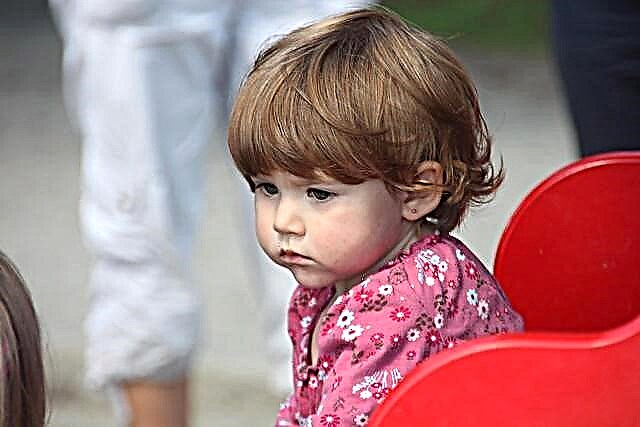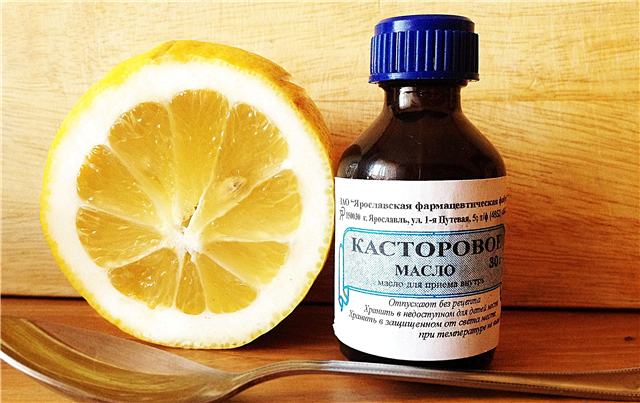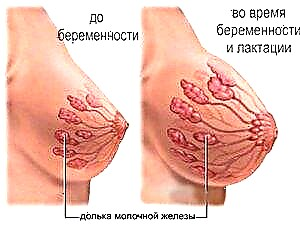Childish tantrums are, unfortunately, not uncommon. Moreover, especially often, such emotional responses occur in a child at three years old, since it is this age that is accompanied by crisis manifestations that signify the emergence of personality neoplasms.
When asked what hysterical behavior is, mothers will answer without hesitation: aggressiveness, loud screams, tears, uncontrollable actions. Similar signs are common in children between 2 and 5 years of age.
In any case, hysterics in a child of any age will not leave indifferent either his relatives or eyewitnesses of an attack. How should mom behave in a similar situation? Punish? Slap? Ignore? To regret? The main thing is to stay calm.
Features of the course of hysteria
A hysterical attack in children (no matter at what age - at 2, 3, at 7 or 8 years) is characterized by emotional excitement, aggressiveness, which can be directed at others or at oneself.
The child begins to sob, scream, fall to the floor or the ground, bang his head against the wall or scratch his body. At the same time, he almost completely "disconnects" from reality: he does not perceive the words of other people and does not feel pain.
In especially severe cases, involuntary convulsive reactions occur, which are known in medicine as the "hysterical bridge". The baby's body arches in the form of an arc, and his muscles become tense.
A hysterical attack and a whim should be distinguished. The first is characterized by involuntary behavior. Whimsical behavior is a deliberate step based on the desire to possess something. Such techniques are often included in the "arsenal" of children who are prone to manipulative actions.
Hysterics in young children most often usually follows a similar scenario and includes several stages. Each of them is characterized by certain symptoms, which must be known, as this will help to quickly stop the attack.

The main stages of a hysterical attack in children:
- Harbingers. Before the "concert", a 2 or 3 year old child begins to express displeasure. It can be whimpering, puffing, prolonged silence, or clenching of fists. At this point, hysterics can still be prevented.
- Voice. At this stage, the child begins to scream, and so loudly that it can frighten others. Demanding to stop is useless - he is cut off from reality and hears no one.
- Motor. The child's active actions begin - throwing things, stomping, rolling on the ground or floor. This phase is the greatest danger for the baby, since he can be injured, because he does not feel pain.
- Zfinal. Having received "relaxation", hysterical children seek support and consolation from their parents. The kids are tired physically and mentally, since such a strong emotional shock takes away a lot of their strength.
An exhausted child usually falls asleep quickly, and his sleep will be quite deep.
Who is most prone to hysteria?
Psychologists note that not all babies are equally prone to hysterical seizures. The frequency and strength of an emotional outburst is determined by the type of temperament and higher nervous activity:
- melancholic. These are children with a weak nervous system, characterized by increased anxiety, often mood swings. Such a baby is often hysterical, however, due to the weakness of the central nervous system, it sooner returns to normal;
- sanguine people. Children with this type of nervous activity at any age (whether at 2 years old, at 7 or 8 years old) are usually in a good mood. Tantrums can happen if the cause is severe stress. However, this is rare;
- choleric people. Such children are distinguished by an unbalanced character and bright emotional outbursts. Hysterical attacks occur in small choleric people suddenly, and are often accompanied by aggressive manifestations;
- phlegmatic. Such kids already at 4 years old (and even younger) are characterized by calm behavior and prudence. Their processes of inhibition prevail over arousal, so hysterics practically do not arise.
Based on the foregoing, we can conclude that mothers and fathers of little melancholic and choleric people, that is, children with unbalanced types of nervous activity, will complain more often about children's tantrums.
Age features
Before proceeding directly to the factors that provoke the onset of children's hysteria, it is necessary to dwell in more detail on the features of the development of three-year-old children.
At about 3 years of age (plus or minus 7 or 8 months), babies begin a period known as the 3-year-old crisis. From this moment, the child realizes himself as a separate person from his parents, he has a desire for independence.
You can learn more about such a psychological phenomenon as a three-year crisis from another article by a child psychologist. This material contains a lot of useful advice, including how to combat the child's hysterical behavior.
In all children, such a crisis period can manifest itself in its own way, but usually psychologists distinguish a kind of seven-star of signs:
 negative reactions;
negative reactions;- obstinate behavior;
- stubbornness;
- despotic manners;
- depreciation;
- self-will;
- protest reactions.
It would seem that at 2 years old the baby was so obedient, but now he starts to do everything "out of spite": he takes off his clothes if asked to wrap himself up; throws the toy away if asked to pick it up.
Tantrums at this time are quite common, in especially difficult situations the baby is capricious 7 or 8 times a day (of course, classic hysterical fits are much less common).
When a child turns four, tantrums gradually fade away, as other, more perfect methods of expressing their own emotions and desires appear in the children's arsenal.
Causes of tantrums in three-year-old children
To know how to deal with persistent childish tantrums, you need to have an idea of what causes them. The solution to the problem will depend on what exactly triggered the hysterical reaction.
The most popular reason for hysteria in babies is the conflicts that inevitably arise in parent-child relationships. In addition, do not forget about the age characteristics of children at 3 years old.
In general, several main factors can cause a hysterical reaction in three-year-olds:
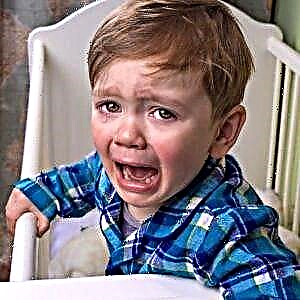 A 3-year-old baby does not have a wide vocabulary, so he cannot yet talk about his experiences, feelings and emotions. Therefore, he will react with hysteria to any conflicting or ambiguous reaction.
A 3-year-old baby does not have a wide vocabulary, so he cannot yet talk about his experiences, feelings and emotions. Therefore, he will react with hysteria to any conflicting or ambiguous reaction.- Parents' refusal to fulfill the request of a child who wants another car or doll, asks to buy ice cream or a chocolate bear can also provoke an undesirable reaction.
- A child often becomes hysterical after the birth of younger brothers and sisters. So he seeks to attract parental attention, besides, banal jealousy speaks in him, since the newborn has now taken center stage.
- "Psychos" can arise from the usual overwork. A busy day, during which the child visited the kindergarten, visited a supermarket with his parents, dropped in to visit familiar children, and then watched cartoons - all this can lead to hysteria.
- The child's tantrums are the result of his unwillingness to be distracted from what he loves. The kid, for example, builds Easter cakes in the sandbox, and at this moment the mother decides to go home. As a result, the baby screams and hits the ground.
- Banal malaise is another frequent catalyst for a hysterical attack. This is a five-year-old child who can talk about an aching stomach, and many three-year-olds are not yet able to convey information about their condition.
Thus, every hysteria has some kind of background. It should be understood that a three-year-old child is not going to deliberately anger his mother, on the contrary, his own attack also scares him. This is why you need to properly respond to child behavior.
Tantrum warning
If tantrums in a 3-year-old child become more frequent, the advice of a psychologist will come in handy. And the most important recommendation is to avoid a hysterical fit. That is, your goal is not to combat the reaction, but to prevent it and mitigate the severity of outbreaks:

- It is important to maintain a daily routine. Both toddlers at 3 years old and children at 7 years old feel safe if they follow a clear daily routine. Therefore, you need to try to put the child in the day and in the evening at a certain time.
- You need to prepare your child for the upcoming changes. For example, it is necessary to warn about a future visit to kindergarten not when the baby crosses the threshold of a preschool institution for the first time, but a few weeks before the event.
- You must firmly follow your decision. You don't need to change your firm decision in response to tantrums and whims. The older the child is, the more his bad behavior becomes a way of manipulation. By the age of 7 or 8, you simply cannot cope with a young manipulator.
- Prohibitions should be reviewed. On the other hand, you need to "revise" the restrictions and leave only the really vital ones. But it is better to refuse optional prohibitions. Who said that you can't make sandwiches if lunch is late?
- It is worth giving children a choice. For three-year-olds, independence and independence are important, which can be provided by the usual alternative. The child can decide for himself which blouse to wear for a walk - blue or yellow.
- Try to pay maximum attention. Children strive to receive parental attention by any means, even bad ones. Try to spend more time with your child and respond to his desire to be with you.
It is important to carefully monitor how the child reacts to the development of the situation. If you notice the harbingers of hysterical behavior (clenched fists, whining, threatening silence), it is better to immediately switch the baby's interest to something else.
How to stop a child's tantrum?
If the hysterical attack has not gone too far, the baby can be distracted by an unusual object or sudden act. This method rarely works, but you should know other techniques to reduce the intensity of passions:
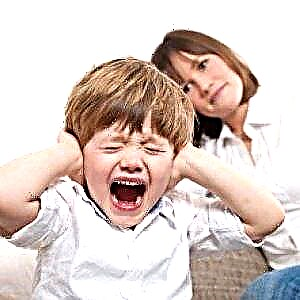 Do not panic, do not show that the childish tantrum hurts you. You also need to monitor your own emotions, since mom's screams or aggression will only increase the intensity of passions and aggravate the situation.
Do not panic, do not show that the childish tantrum hurts you. You also need to monitor your own emotions, since mom's screams or aggression will only increase the intensity of passions and aggravate the situation.- Show that crying and shouting do not affect your behavior. At the very beginning of the tantrum, ask the child to calmly say what he wants. If the seizure intensifies, it is best to leave the room and discuss the child's behavior after a while.
- Children's tantrums sometimes become a game for the audience. You can stop the attack by relieving the baby from the "spectators". At home, you just need to leave it in the room, in public places - try to find a secluded corner.
- What if the child does not know how to protest in other ways? The answer is simple: you need to teach him to describe his feelings in words. For example: "I am angry", "I am unhappy", "I am uncomfortable", etc.
- Should I let my child roll on the floor or on the ground? This is not a very correct decision, since this way he can injure himself and even injure himself. You need to cope with such situations by holding the baby close to you, even if he pushes and kicks.
- A discussion of how to deal with child tantrums would not be complete without understanding what should not be done under any circumstances. Psychologists talk about the inadmissibility of punishment. Slapping during an attack will only worsen the situation and exacerbate the negative reaction.
Do not think that after the first application of one of the above recommendations, tantrums will disappear. Some mothers think that as soon as they leave the room, the baby will calm down. This is simply not possible because it takes time to form a new habit.
What to do after a tantrum?
You need to understand that work with a child begins precisely after the end of hysterical reactions. They should be dealt with consistently and progressively, unless, of course, you want them to be repeated over and over again.
First of all, it is necessary to teach the child socially acceptable methods of expressing their feelings and aspirations. It is best to do this through role-playing games or reading special literature - fairy tales and poems.
You should also convey to the children the idea that they may not always be able to get what they want. Moreover, what is desired is not achieved with the help of such undesirable actions as screams, tears, jerking of the lower limbs.
Always explain to the little "bully" how much his act upset you. Be sure to demonstrate that your love for him is unconditional, but tantrums make you feel a lot of unpleasant emotions.
Children's tantrums are often fixed in the child's behavior and turn into a habit. Therefore, this problem cannot be solved quickly. In addition, the length of retraining will depend on the type of temperament of the toddler. The most difficult thing will have to do with little choleric people.
When do you need specialist help?
Most often, after six or eight weeks of regular parenting, the child's tantrum stops. However, in rare cases, this behavior not only does not stop, but also becomes more frequent or severe.
Tantrums in a 4-year-old child are still more rare than commonplace. Therefore, if at this age hysterical attacks are repeated, one can assume the presence of diseases of the nervous system.
A pediatric neurologist should be consulted if:
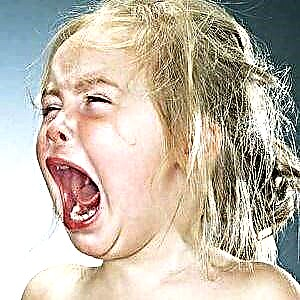 hysterical acts became more frequent or were accompanied by aggressive acts;
hysterical acts became more frequent or were accompanied by aggressive acts;- the child faints during a seizure or begins to hold his breath;
- the tantrums of a 5-year-old child have not yet subsided;
- an emotionally excited baby tries to harm loved ones, peers or himself;
- hysteria usually begins at night, accompanied by nightmares, screams, somnambulism;
- hysterical seizure ends with shortness of breath, nausea, excessive loss of strength.
If a medical examination does not reveal any abnormalities in health, then, most likely, the problem may be in the sphere of parent-child relationships or in the inadequate reaction of loved ones to the baby's behavior.
You should not give your child sedatives of their own accord. Inadequate medical therapy can harm the baby, therefore, treatment can be carried out only after examination by a neurologist and only with prescribed drugs.
As a conclusion
The answer to the question of how to deal with a child's tantrums worries many parents. This problem becomes especially urgent when the baby turns three years old.
Experts are convinced that moods and mild hysterical attacks are not a deviation from the norm at the age of three. This period is characterized by crisis phenomena, which become the source of problematic behavior.
Usually, after the end of the crisis period, hysterical fits also disappear. If they recur after 4 - 5 years, it is better to turn to specialists who will confirm or dispel doubts.
In general, it is important to respond correctly to ambiguous children's actions. Parents should communicate more with the child, teach him how to manage his emotions, and demonstrate their unconditional love.
In this case, the child's tantrums will lose their sharpness and brightness, which means that soon the baby will stop using them as an instrument of pressure on the parents. Consequently, very soon calm and peace will reign in the family.

 negative reactions;
negative reactions; A 3-year-old baby does not have a wide vocabulary, so he cannot yet talk about his experiences, feelings and emotions. Therefore, he will react with hysteria to any conflicting or ambiguous reaction.
A 3-year-old baby does not have a wide vocabulary, so he cannot yet talk about his experiences, feelings and emotions. Therefore, he will react with hysteria to any conflicting or ambiguous reaction. Do not panic, do not show that the childish tantrum hurts you. You also need to monitor your own emotions, since mom's screams or aggression will only increase the intensity of passions and aggravate the situation.
Do not panic, do not show that the childish tantrum hurts you. You also need to monitor your own emotions, since mom's screams or aggression will only increase the intensity of passions and aggravate the situation. hysterical acts became more frequent or were accompanied by aggressive acts;
hysterical acts became more frequent or were accompanied by aggressive acts;